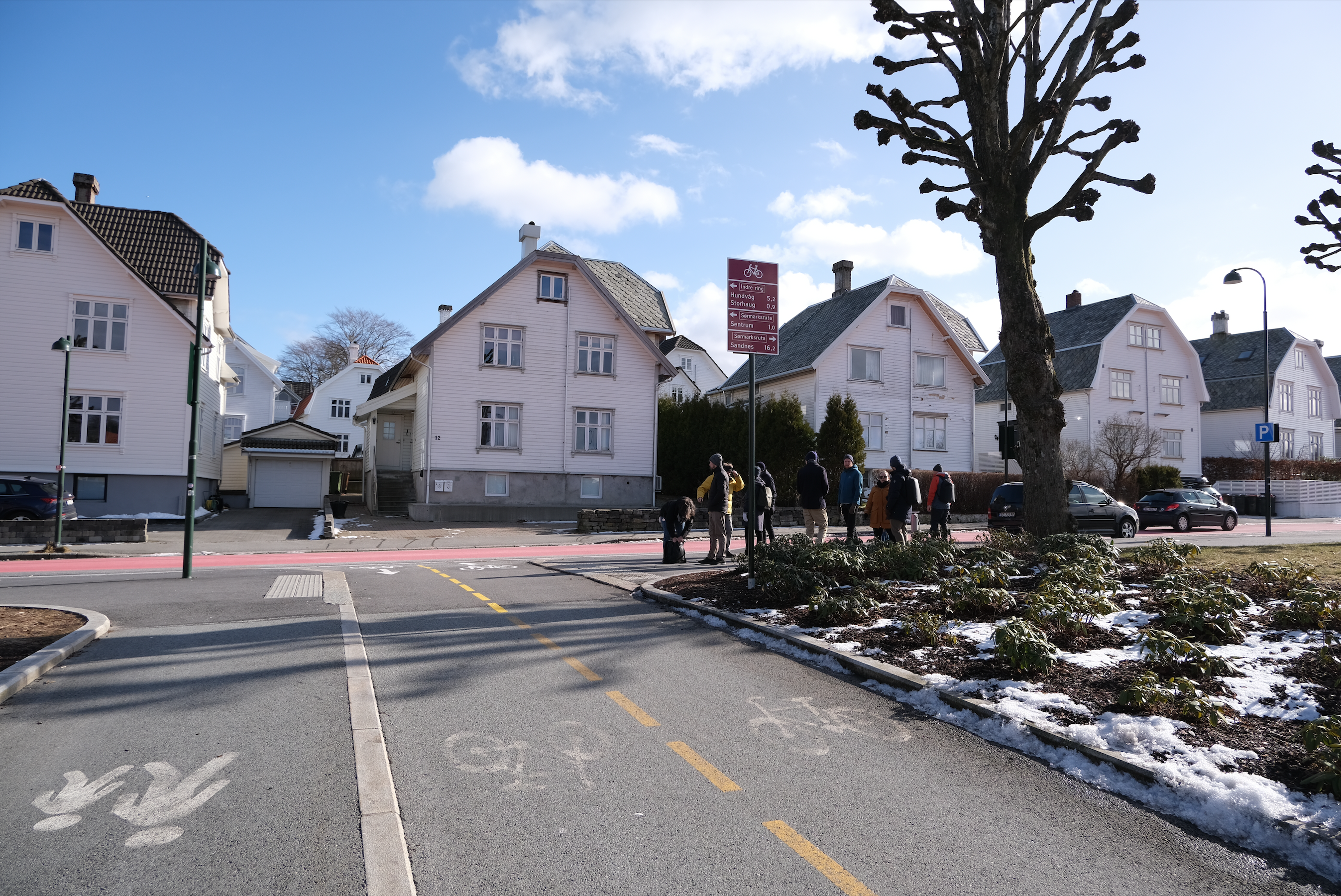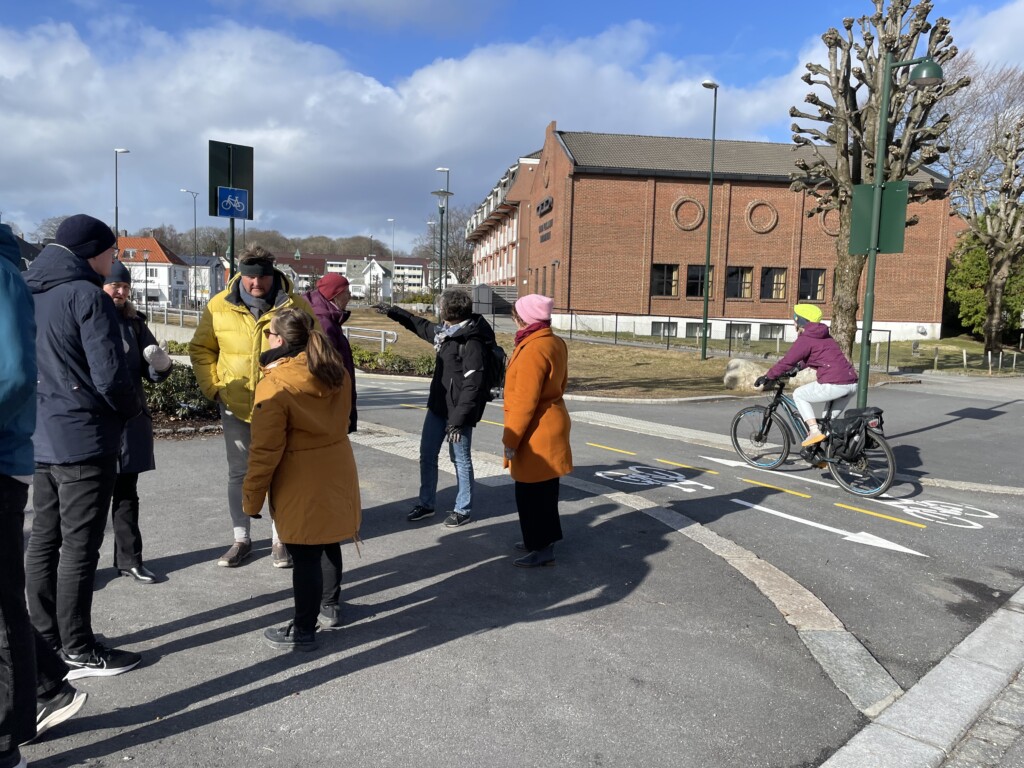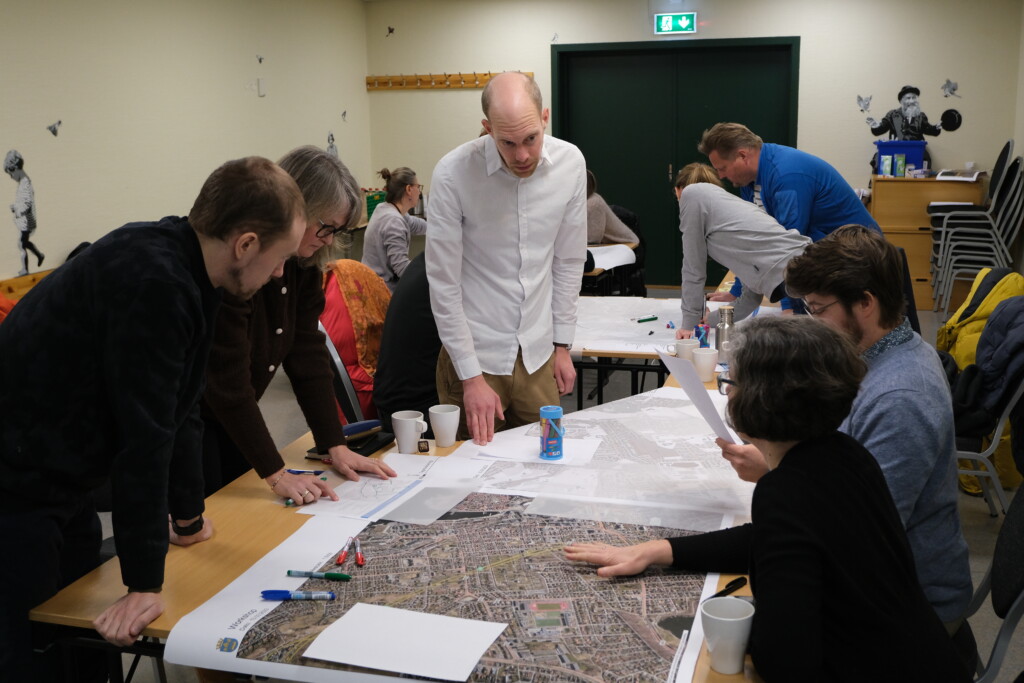Cycling / Public Spaces
Cycling Cities Workshop in Stavanger: Building on success in Norway’s “Best Cycling City”
In September 2022, the City of Stavanger was name Norway’s Best Cycling City at the Norwegian Cycling Conference. After investing heavily in sykkelprioriterte gater (cycling priority streets), as well as building out an intercity “cycle highway”, the City has set themselves apart from other notable Norwegian cities as a great place for cycling. During the conference, Communications and Engagement Advisor Melissa Bruntlett connected with Monica Johansen Bikos, Senior Cycling Network Planner at Kommune Stavanger, who was interested in bringing Mobycon to Stavanger to keep building on the City’s successes in the coming years. In March 2023, Melissa, together with Mobility Advisor Robin van der Griend, delivered a 1.5-day workshop to help them realize their goals.

Already a cycling city
The focus of the workshop was on what steps Stavanger can take to improve what has already been built for cycling. Beginning with an examination of how cycling became ubiquitous in Dutch cities, and what that has meant in the big picture of who benefits from these investment, they discussed how traffic calming and network planning – for walking, cycling, public transport, and even cars – have been integrated to ensure that regardless of age, gender, or ability, everyone has access to transport options for their daily needs.
From there, the focus was narrowed to the various design elements that make cycling safer and more comfortable, particularly on neighbourhood streets. Due to a hierarchy of control over the various street types in Norway, the City of Stavanger is mainly focused on their neighbourhood level streets, using them to create a connected network for cycling. With an already high number of cycling streets, it was important to discuss finer details like continuous sidewalks, traffic calming, and the importance of coherence to identify cycling priority spaces. Stavanger identifies these streets through the use of red paint; however, the greater challenge is what happen to cycling priority where streets intersect. This was an excellent opportunity for the participants, representing teams from the cycling, walking, road safety and land-use teams, to discuss challenges as well as opportunities to use the historical knowledge they already have to layer successful approaches into a cohesive plan forward.
From Cycle Streets to a Cycling Network
The first day concluded with a walking tour of Stavanger’s cycling infrastructure, starting and ending in the Eiganes neighbourhood and locations of several cycling priority streets and dedicated pathways. One of the core questions posed by Stavanger was how to create a cycling network that really links the community and encourages more people to choose cycling. Throughout the tour, City staff showcased the existing cycling infrastructure, identified locations for future implementation, as well as highlighting key corridors that presented challenges ranging from speed management along the corridors to safer treatments at intersections. What became clear as they showcased existing traffic calming measures and networking integration is that Stavanger already has a good foundation for their network and doesn’t need to start from scratch to realize their ambitions.

Day two focused on network planning based on the learning from the previous day. Using a series of base maps and treatment models, the group was separated into three breakouts. They were challenged to look at the integration of their existing walking, cycling, public transport and car networks within the Eiganes neighbourhood, identify gaps in the network, and consider where new traffic calming and filtering could be applied to improve comfort for cycling and walking. Robin and Melissa challenged the group to think about whether a cycle priority street was actually necessary in certain spaces, or if the same quality of experience could be achieved simply through calming the space without applying the red paint. The purpose of this was to help them think bigger about the network and behaviour change not just through red paint, but through the use of traffic calming design elements to manage how people move within the neighbourhood.

Next Steps: Consensus building through collaboration
Over the course of the day and half, what was clear was how important it was for these colleagues from different sectors within the City of Stavanger to have space for open dialogue. Throughout the workshop participants openly shared their challenges, concerns, as well as brainstorming opportunities that some noted are forgotten within the day-to-day workings. Having a space to talk through their perspectives helped identify many of the ways they are all working towards a similar goal, and through collaborating during the group exercise, could find solutions that helped to address their commons needs.
With a strong existing foundation and ongoing plans for expanding the cycling network, Stavanger is certainly seizing the opportunity as Norway’s Best Cycling City to keep pushing forward. Despite hilly topography, rainy and snowy conditions, and a dominating car culture, there are still many people already making cycling a regular part of their everyday transportation. Future investments are well-poised to ensure those numbers continue to grow, and with the development of a cohesive, attractive, and expanding network, along with ongoing collaboration, we’re excited to see were they go from here!
 ">
">Robin van der Griend
“I am passionate about mobility, especially in urban contexts. It is an exciting challenge to contribute to more liveable places by designing streets that work for people, regardless whether people are staying or going. Using my experience from the Netherlands and the Nordics I enjoy helping cities with becoming more sustainable, mainly through giving people better options to walk and cycle.”

